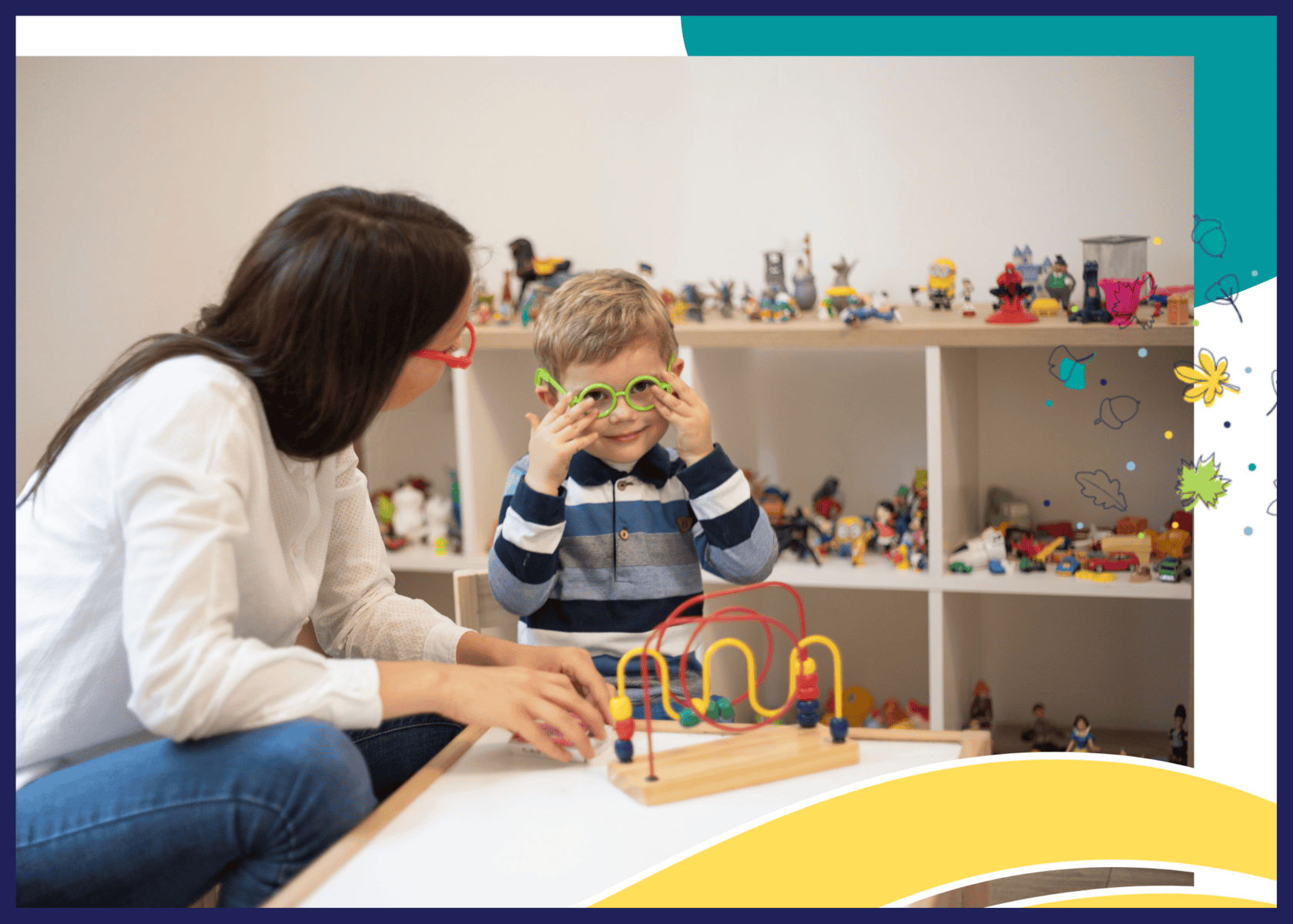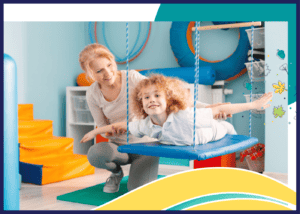Unlocking the Healing Power of Play: Why Play Therapy Works for Children
If your child is struggling with big emotions, behavioural challenges, or overwhelming experiences, you may already know how hard it can be to get them to open up. Children don’t naturally express themselves through words the way adults do. Instead, they speak through play—their most natural and instinctive form of communication.
That’s where Play Therapy comes in.
What Is Play Therapy?
Play Therapy is a specialized form of counselling that meets children right where they are—on the floor, in the sandbox, or at the art table. Rather than relying on conversation, trained therapists use carefully selected toys, games, and creative materials to help children explore their inner worlds, process difficult experiences, and build essential emotional and social skills. In Play Therapy, children feel safe, supported, and free to be themselves—all while doing what comes naturally to them.
Why Choose Play Therapy?
Parents often come to us feeling stuck. Maybe traditional “talk therapy” didn’t feel like a good fit, or their child couldn’t quite put their feelings into words. Play Therapy offers a powerful alternative. Backed by decades of research, this approach has been proven to help children facing a wide range of challenges, including:
- Anxiety and worry
- Depression and sadness
- Trauma and loss
- Behavioural issues
- Social difficulties
Through play, your child doesn’t just “talk about” their struggles—they show them. And that’s when the real healing begins.
What the Research Tells Us
As a parent, you want to make sure you’re choosing the right support for your child. Fortunately, the evidence for Play Therapy is strong and growing. A comprehensive meta-analysis of over 100 Play Therapy studies found significant positive outcomes in children’s emotional wellbeing, behaviour, and overall functioning.
Research also shows that children are more likely to stay engaged in therapy when it involves play, which increases the chances of lasting progress. Even more promising, when therapists combine Play Therapy with other evidence-based approaches—like cognitive behavioural therapy (CBT)—children often see even better results.
5 Reasons Play Therapy Works So Well
- It Feels Safe and Non-Threatening
Play Therapy creates a safe, judgment-free space where children can be themselves. The experience feels natural—not clinical—which helps children let their guard down and express thoughts and feelings they may not even realize they’re holding inside.
- It’s Developmentally Appropriate
Your child isn’t just “playing” in therapy—they’re communicating in the way their brain and body were designed to. Therapists use toys and activities that match your child’s age and stage of development, helping them process complex emotions in ways they can truly understand. - It Builds Emotional Intelligence
Through guided play, your child learns to identify, name, and manage their emotions. This emotional awareness—known as emotional intelligence—is a key building block for resilience, self-regulation, and future success in relationships and life. - It Strengthens Social Skills
Play Therapy doesn’t just help your child internally—it also equips them to navigate the outside world. As they play, children practice communication, cooperation, turn-taking, and problem-solving. These social skills are crucial both in and out of the therapy room. - It Encourages Expression and Healing
Sometimes, a child simply can’t find the words to explain what they’re feeling—especially if they’ve experienced trauma or loss. In Play Therapy, a child might show what happened using dolls or action figures, or express anger and fear through drawing or storytelling. These forms of expression help children release what’s been bottled up and start to make sense of their experiences.
What to Expect as your Child Progresses
Many caregivers wonder “How will I know if Play Therapy is working?” While every child is unique, some common signs of progress include:
- Improved social interactions with peers or siblings
- Fewer emotional outbursts or quicker recovery from them
- Increased use of words to express their feelings
- Greater flexibility and problem solving skills during challenges
- More engagement in play or creativity
Keep in mind that healing isn’t always linear. There may be ups and downs as your child explores difficult emotions. Regular check-ins with your child’s therapist can help you understand the process and track changes.
Play Therapy is a journey, meaning that as your child grows, their play and emotional needs may evolve too. What’s important is that they feel accepted and empowered to express themselves at their own pace.
How to Support the Healing Power of Play at Home
While therapy sessions offer a structured space for healing, the emotional growth doesn’t stop when your child leaves the therapist’s office. In fact, play at home can reinforce what your child is learning in therapy and can strengthen your bond in the process.
At home, one of the most valuable ways parents can support their child’s emotional growth is by making time for unstructured play. Letting your child take the lead during playtime builds confidence, fosters self-expression, and reinforces the therapeutic work happening in sessions. You don’t need a house full of fancy toys—open-ended items like dolls, action figures, art supplies, building blocks, or toy animals can spark storytelling and invite emotional expression in a natural, child-led way. As a parent, your role isn’t to interpret or fix what’s happening in the play. Instead, focus on being present and curious. Sit nearby, join in when invited, and let your child know: I see you, and I’m here.
You can also try incorporating simple, therapy-inspired games at home, such as Beat the Clock by Liana Lowenstein. In this activity, children complete fun challenges—like naming three things that make them feel happy or drawing a picture of a safe place—before a timer runs out. This not only keeps things engaging and playful, but also helps children develop emotional awareness and coping skills in a safe, structured way. When you show up with patience, and a willingness to play, you create everyday opportunities for healing and connection.
The Takeaway for Parents
If your child is struggling—and you’re not sure how to reach them—Play Therapy offers a gentle, effective, and evidence-based path forward. It’s more than just playing with toys. It’s a powerful therapeutic tool that meets children where they are and helps them grow into who they’re meant to be.
At our clinic, our trained Play Therapists are here to support your child with compassion, creativity, and proven methods that work. Whether your child is dealing with anxiety, grief, behavioural challenges, or something they just can’t quite put into words, Play Therapy can help them feel seen, heard, and empowered.
Want to learn more about whether Play Therapy is the right fit for your family? We’d be happy to talk.
Recently, Justine Bourak, one of our clinical interns, attended a training on Play Therapy. As she hones in her skills in working with children through their language of play, she shares her thoughts about her recent experience here as well.

To learn more about Justine or our intern program, visit the Clinical Intern page here.
What I Most Enjoyed about Learning about Play Therapy
One of the aspects I most enjoyed learning about in Play Therapy was the 20 core agents that lead to therapeutic change, which are grouped into four categories: facilitating communication, fostering emotional wellness, enhancing social relationships, and increasing personal strengths. The agents that stood out most to me were self-expression, the role of the helper, and the development of self-regulation.
Supporting self-expression in therapy involves creating space for the child to freely explore their inner world. This can be done by offering diverse options for play and creative expression, narrating the child’s actions without judgment, following their lead, encouraging imagination, and validating all emotions as they arise. The role of the therapist—or helper—is to be a calm, grounded presence, acting as a witness to the child’s experience: “I am here with my whole being, observing what you are showing me.” This involves offering acceptance, avoiding excessive questioning, and practicing curiosity only when it serves the child’s needs.
Additionally, I was particularly drawn to the role of co-regulation in developing self-regulation. Many children respond to overwhelming emotions with dysregulated behaviours like throwing or fleeing. In Play Therapy, the therapist sets clear, consistent, and compassionate boundaries, creating a shared experience of calm and safety. Through this repeated process of co-regulation, children gradually learn to internalize those responses, building the foundation for emotional self-regulation over time.






